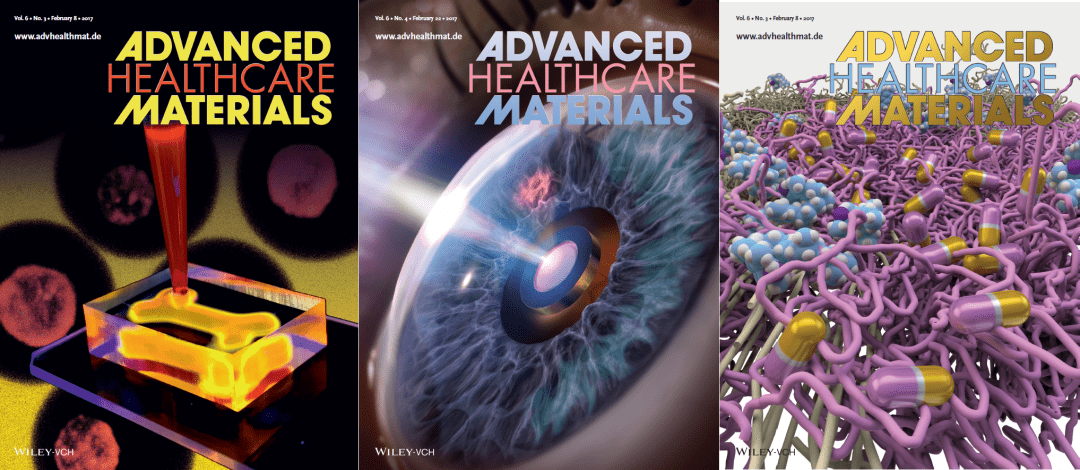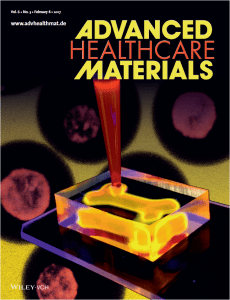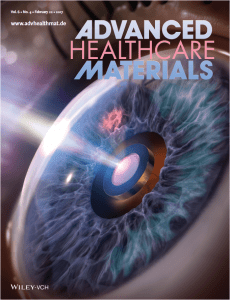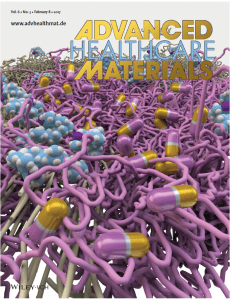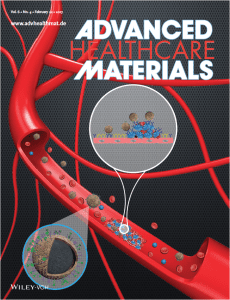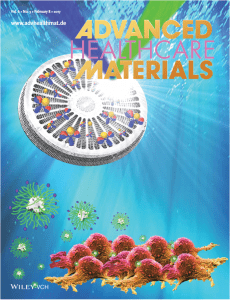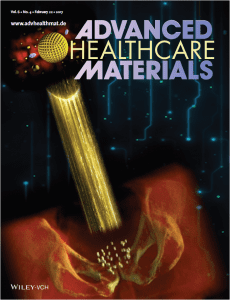Advanced Healthcare Materials celebrates its 5th birthday this year! Since 2012 we have been bringing you the latest breakthroughs in biomedical materials science with a strong focus on improving human health, and we will continue to do so in 2017. Read more about this in our latest editorial.
No access yet? Make sure to recommend Advanced Healthcare Materials to your librarian. More information can be found here.
In this monthly feature, we highlight the artwork on the covers of both issues of Advanced Healthcare Materials, and of course the research behind it. You can find this month’s issues here and here. Click on the headers below to get to the corresponding papers. Also check out our previous monthly top-downloaded papers feature here.
Although biomimetic tissue engineering approaches have gained significant attention in the past years, 3D constructs with modularity as found in native tissues are still hard to develop. Karperien, Leijten and co-workers, in collaboration with the Khademhosseini lab, have come up with single cell-laden microgels that can be mixed with injectable biomaterials to form modular bio-inks well-suited to a variety of biofabrication techniques. As the construct’s cellular microenvironment and hydrogel’s macroenvironment can be modified separately, this approach provides the constructs with two important features: immunoprotection and vascularization.
A more extensive news article about this study can be found here.
Intraocular pressure is a main risk factor for glaucoma, a leading cause for blindness. Frequent monitoring by implantable medical microdevices allows optimal treatment. Hyuck Choo et al. from the California Institute of Technology in Pasadena use for the first time black silicon as a multifunctional biomaterial on an implantable medical sensor in vivo. They demonstrate an improved sensor performance, a world-record optical readout distance in fact, combined with anti-biofouling properties for excellent biocompatibility.
A research team led by Mukerrem Cakmak at the University of Akron in Ohio, USA presents a novel approach to zero-order constant-rate drug delivery from three-layer bimodal amphiphilic co-network contact lenses. Combined effects of a non-uniform distribution of the drug loading and the diffusion constants maintain a low local drug concentration at the lens–fluid interface and yield zero-order drug delivery. The release of topical antibiotics provides constant-rate therapeutic-level delivery with appropriate oxygen permeability for at least 30 hours.
Strokes and myocardial infarcts strongly require optimal treatment and diagnosis methods. Increased expression of P-selectin by activated platelets and endothelial cells is a marker for early detection of arterial thrombi, causing these acute conditions. Cédric Chauvierre and co-workers from INSERM in Paris, France have developed biodegradable microcapsules functionalized with fucoidan, a polysaccharide ligand for P-selectin, as a promising carrier for imaging and therapy of arterial thrombi overexpressing P-selectin.
Low-cost and large available biogenic silica from diatoms and diatomaceous earths represents an innovative material for successful development of next-generation healthcare devices, overcoming the limitations of synthetic inorganic and polymeric materials production. Luca De Stefano and his co-authors from the Institute for Microelectronics and Microsystems at the CNR in Naples, Italy now review this topic in their Progress Report. The cover picture shows some examples of bio-engineered nature-derived silica nanodevices with biomedical functionalities for biosensing and subcellular drug delivery applications.
Prostate cancer is often treated by internal radiotherapy (brachytherapy), during which tens of radioactive implants made of massive metal “seeds” are inserted in the diseased tissue. A group of Canadian scientists led by Marc-André Fortin from the Université Laval in Québec report on a new technology based on the injection of radioactive gold nanoparticles. The nanoparticles diffuse into the tumor, where they progressively deliver a radiotherapeutic dose with more precision and fewer potential side effects.

